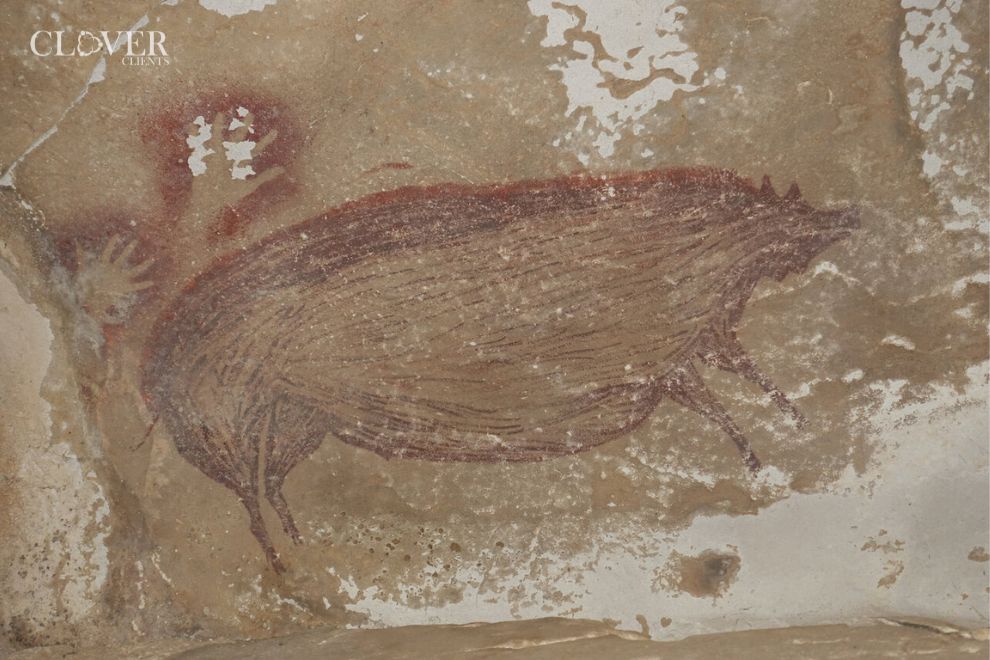The discovery of the oldest cave painting is a depiction of a Sulawesi warty pig on the Indonesian island of Sulawesi, dating back 45,000 years. This has since been surpassed by a discovery on the very same island. It even relegates the previous record to a dim memory, while also extending the boundary as being the oldest narrative scene ever through art: a hunting scene with human-bird hybrids dating back to 49,000 BCE.
Discovery and Dating Techniques
The painting was initially discovered in 2017 by a group of scientists from Griffith University, Australia. These people were surveying caves in Sulawesi. They used a new technique for dating paintings; it is called laser-ablation U-series imaging. This method involves measuring “U” or uranium. The technique brings more accuracy to the dating of calcite layers. Thus, gradually it constituted the pigments used in creating the cave art.
Most of these ancient artworks have remained well-preserved because of the peculiar climate and topography of Sulawesi. The infiltrating water through the karst rock forms calcite, rather like “popcorn” buttons. It is known to protect the pigments like a layer of icing on a cake. When scientists run a laser through those calcites, they can tell how old the first layer of calcite is. It indicated the area that would have been deposited next to the paint—and the results are eye-popping. It was discovered that some paintings were 4,000 years older than initial estimates.
Significance of the Discovery
The findings indicate that the inhabitants of Sulawesi were engaging in ceremonial painting over 50,000 years ago. Renaud Joannes-Boyau, a co-author of the study published in the journal Nature. He also remarked that the caves were not common living spaces. “They were difficult to reach and likely used for specific purposes, probably linked to some sort of ceremony,” he explained.
The hunting scene depicted on the cave walls is believed to be a narrative born of imagination rather than a literal representation. The stick figures in the painting are “therianthropes,” or human-animal hybrids. These suggest that the artwork reflects imaginative storytelling rather than factual recording. This contrasts with other cave art that shows which animals could be hunted in specific areas.
Implications for Understanding Early Human Culture
The discovery of such ancient narrative art is significant because it provides insight into the cognitive and cultural capabilities of early humans. “Representation of human figures is already extremely rare, but the storytelling of 51,200 years old is even more incredible,” Joannes-Boyau told NBC. This implies that early humans in Sulawesi were not only skilled in creating art but also in conveying complex stories and ideas through their paintings.
This new finding challenges previous assumptions about the timeline of human cognitive development and the emergence of symbolic thinking. It suggests that early humans had a sophisticated understanding of narrative and imagination much earlier than previously thought. There has been a remarkable history of caves and human findings and there are more yet to be discovered.
The discovery of the oldest narrative cave painting in Sulawesi is a remarkable achievement in the field of archaeology and anthropology. It sheds light on the advanced cognitive abilities of early humans and their capacity for imaginative storytelling. As scientists continue to explore and reassess ancient sites with new technologies, our understanding of human history and cultural evolution continues to deepen. This extraordinary find not only breaks previous records, it also opens new avenues for exploring the rich and complex history of human artistic expression.

